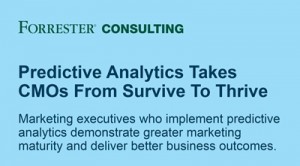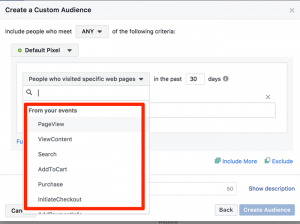
If you keep up with the trends in online customer acquisition then you are probably familiar with the terms inbound marketing and content marketing. These phrases represent the most effective techniques in the current landscape of attracting traffic and converting that traffic into leads and then sales.
A few years ago, master marketer and global influencer Seth Godin famously said that “Content marketing is the only marketing left.”
If you are not familiar with the concept, I’ll give you the high concept. In this day and age, traditional advertising like television commercials, direct mail and sales letters have lost their punch. Consumers have grown accustomed to having any information they need right at their fingertips. They don’t have the time or patience to peruse through interruption-style offers.
The way to attract today’s consumer is by providing useful and educational information (for free) that solves their problems and builds trust. With enough trust, the consumer answers a call to action, like giving the marketer their email address, thereby becoming a lead. Through additional leveraging of rich content by the marketer, that level of trust builds enough to the point that when the consumer is ready to make a purchase, they do so with the person or company that has been so helpful and useful along the “buyer’s journey.”
This has lead to a revolution of content triggered by social media, targeted blogging and permission-based email campaigns. To give you an idea of just how effective a good inbound marketing strategy can be, here are a few numbers for you based on recent studies:
- Inbound practices produce 54% more leads than traditional outbound practices.
- According to Search Engine Journal, inbound leads cost 60% less than outbound leads.
- B2B companies that blog generate 67% more leads than those that don’t.
And that’s just the tip of the iceberg. Marketers and business owners love statistics, but what’s even more compelling are the true stories of small businesses that used inbound marketing to explode their bottom line. Let’s take a quick look at 3 of those stories.
Marcus Sheridan, the owner of this pool company, has become somewhat of a poster child for the efficacy of inbound marketing. After the economic collapse of 2008, his business was headed in a downward spiral.
With nowhere else to turn, Marcus started using content marketing strategies (mostly in the way of a huge blog with just about any information you could ever ask for about swimming pools) to turn his business into an absolute powerhouse. It is the go-to resource for his industry. In fact, after revamping his marketing approach, his swimming pool blog sees about 500,000 new visitors every month.
His story is so dynamic that he decided to teach other small business owners how to use the same techniques and is now a highly sought-out consultant and public speaker on the topic of inbound marketing. He still keeps his pool company going though, and why not? It’s so successful that if you live in the Maryland or Virginia market where River Pool and Spa operates, you will have to go on a waiting list.
This Boston-based appliance company put a lot of work into their blog, including installation videos, buyer’s guides, and hundreds of pages of product information. They even have a section on their blog with 129 recipes! The chicken tacos with avocado sofrito look so good I almost forgot I was writing an article.
Their YouTube channel has over 140 videos. I watched one about the difference between slide-in and freestanding ranges. You wouldn’t think that would be something that people would go search for but because of the level of engagement that Yale has created with their clientele, I was viewer number 50,082.
Steve Sheinkopf, the president of the company says that his strategic blogging efforts are really the core of his marketing strategy and the engine driving their social media engagements.
So what has changed since the company started focusing on content/inbound marketing?
- Yale’s traffic has tripled from 40,000 to 150,000 monthly visits.
- Qualified leads have grown from 800 to 2,300 monthly.
- Since implementing content marketing, revenue is up 40%.
Skytap is a small company with less than a dozen employees, based out of Seattle, that provides self-service cloud automation solutions.
Skytap started implementing inbound marketing tactics in 2011 with a sharp focus on buyer personas. Buyer personas are a huge part of successful content marketing. A buyer persona is a representation of the audience a business hopes to reach, including demographics, geographics, needs and challenges, online footprints and any other possible data that can be added in.
By adjusting their focus in on their target market, Skytap was able to experience these results:
- Website traffic in North America went up 210%.
- Leads from their online marketing efforts increased by 97%.
- Organic traffic from search engines (due to rich content and highly targeted blogging) is up 97%.
These are just a tiny handful of examples of small businesses that have seen explosive changes in their marketing efforts by switching their strategy to inbound and content based approaches.
If you would like to implement the same changes in your business to reap similar rewards, I have good news for you. There is a lot of content about content marketing out there. And with a little bit of hard work creating remarkable content, you can initiate inbound marketing strategies for a fraction of what traditional outbound methods would cost.
Remember that Seth Godin quote I mentioned a few minutes ago? In 1999 Seth wrote a book called Permission Marketing. It was the first mainstream business publication that focused on non-interruption marketing. In that book he said something that sums up the whole idea rather nicely:
“Permission Marketing turns strangers into friends, and friends into loyal customers.”
That type of thinking is obviously working for these companies, so it can probably work for you too.
Business & Finance Articles on Business 2 Community(82)
Report Post





